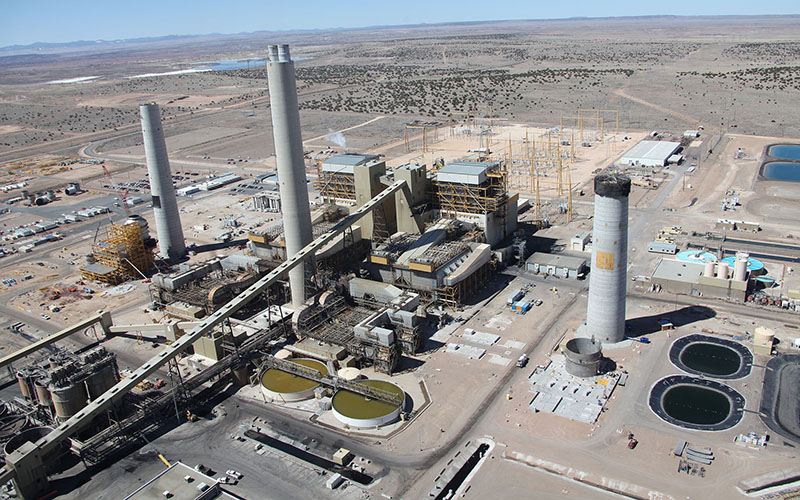
The Coronado Generating Station was one of three coal-fired power plants in eastern Arizona that had emissions restrictions imposed by the EPA. A federal court upheld the EPA action. (Photo by James R. Eastwood/SRP)
WASHINGTON – A federal appeals court Wednesday said the Environmental Protection Agency acted properly when it rejected Arizona’s pollution-control plan for the Coronado Generating Station and imposed its own strict emission limits instead.
The ruling by a three-judge panel of the 9th U.S. Circuit Court of Appeals upheld a lower court, which said that the EPA’s actions were not arbitrary or capricious and should stand.
“EPA’s conclusions … analysis and determinations were well explicated, carefully grounded in the administrative record and analytically reasonable,” said Judge Marsha Berzon in the opinion for the appeals court.
But the court left undecided the question of whether the EPA limits on nitrogen oxide emissions at Coronado were too strict, noting that the department agreed last year to review the limits. A revised plan from the EPA is expected next month, the court said.
A spokeswoman for the Arizona Department of Environmental Quality, which had challenged the EPA’s actions, said Wednesday that the agency was not happy about the panel’s ruling.
“We are obviously disappointed, but we still need to give the opinion a careful, thoughtful review,” said Caroline Oppleman, an ADEQ spokeswoman.
A spokesman for the Salt River Project – which operates the Coronado Generating Station – also declined comment until staff at the utility had a chance to thoroughly review the ruling.
Calls seeking comment from the EPA and the Department of Justice were not immediately returned Wednesday.
The suit involved efforts by the state and power plant operators to meet haze rules under the Clean Air Act and how emissions affect visibility at “Class I Federal areas” – including national parks and protected wilderness. Arizona has 12 Class I lands, with the Grand Canyon being the largest.
States can submit their own plans to bring power plants into compliance, but the federal government can reject those that do not meet Clean Air Act standards. In those cases, the EPA can impose its own implementation plans.
That’s what it did in 2012, rejecting Arizona plans for limits on coal-fired generating units at three power plants in the eastern part of the state: Coronado, the Apache Generating Station and the Cholla Power Plant.
The EPA approved the state’s limits on sulfur dioxide and particulate matter emissions for all the plants, but rejected the nitrogen oxide limits. For Coronado, the EPA required “the most-stringent available” option to bring nitrogen oxide emissions into compliance, among other requirements.
The ruling noted several factors of Arizona’s plan for Coronado were problematic, including the metrics of its cost analysis and visibility modeling, and a failure to weigh other elements, such as existing pollution control technology.
SRP argued that the EPA regulations would be prohibitively expensive with little or no improvement in the resulting air quality. The utility and the state both went to court, claiming that the EPA had exceeded its authority.
But the courts rejected repeated challenges, saying it had to defer to the agency’s decision-making unless the action was “arbitrary, capricious, an abuse of discretion, or otherwise not in accordance with the law.” The actions at the Coronado plant were none of those, said the ruling, which carefully laid out the steps the EPA took in its decision-making.